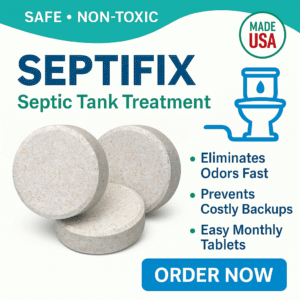When plumbing works, you hardly notice it. But when something goes wrong—like a backed-up sink, dripping faucet, or water heater gone cold—you notice fast. Plumbing problems are more than just an inconvenience. Left unchecked, they can lead to high water bills, structural damage, and even health risks.
Here’s a breakdown of the most common plumbing issues in homes, what causes them, and what you can do to fix or prevent them.
1. Leaky Faucets and Dripping Fixtures
This is the classic. A slow drip might seem harmless, but it can waste hundreds of gallons of water over time—and bump up your water bill.
Common causes:
- Worn-out washers or O-rings
- Corroded valve seats
- High water pressure
What to do: Replace the washer or cartridge. If you’re not comfortable doing it yourself, a plumber can usually fix this in under an hour.
2. Clogged Drains
Sinks, tubs, and showers often get clogged due to a mix of hair, soap, grease, and food particles. Slow drainage or gurgling noises are early warning signs.
What to do: Use a plunger or drain snake to break up the clog. Avoid harsh chemicals—they can corrode pipes. For recurring clogs, consider a professional drain cleaning.
3. Running Toilets
A toilet that won’t stop running can waste up to 200 gallons of water per day. You’ll usually hear it constantly refilling or cycling.
Common causes:
- Worn flapper valve
- Misadjusted float
- Faulty fill valve
What to do: Replace the flapper or float. These are cheap parts and take under 15 minutes to install.
4. Low Water Pressure
If your showers are weak or faucets barely trickle, low water pressure might be to blame. This can affect both hot and cold water lines.
Possible causes:
- Hidden leaks in the pipes
- Corroded plumbing or mineral buildup
- Pressure regulator failure
What to do: Clean faucet aerators. If that doesn’t help, call a plumber to check for internal pipe issues or leaks.
5. Water Heater Issues
No hot water? Or water that’s rusty or smells odd? Your water heater might be failing.
Common symptoms:
- Water not heating at all or not hot enough
- Strange rumbling or popping sounds
- Leaks or pooling near the tank
What to do: Flush the tank yearly to remove sediment. If it’s more than 10 years old, replacement might be more cost-effective than repair.
6. Burst Pipes or Pipe Leaks
Pipe leaks can lead to serious water damage fast—especially in walls, ceilings, or crawl spaces. In winter, frozen pipes are a big risk.
Signs to watch for:
- Sudden drop in water pressure
- Visible water stains
- Spikes in water bill
What to do: Shut off the main water supply immediately and call a plumber. In cold climates, insulate exposed pipes to prevent freezing.
7. Sewer System Backups
Nothing smells worse than a backed-up sewer line. It’s messy, hazardous, and often expensive to fix.
Warning signs:
- Multiple drains clog at once
- Sewage smell near drains
- Toilet bubbling when you run the sink
What to do: Call a plumber right away. Sewer backups are not DIY-friendly. A camera inspection may be needed to find the blockage.
8. Mold or Mildew from Hidden Leaks
Even a slow drip behind a wall can create a perfect environment for mold. This not only damages your home—it can also affect your health.
Look for:
- Musty odors
- Peeling paint or warped drywall
- Persistent allergy symptoms indoors
What to do: Have the area inspected and dried. Fix the leak, then remove and treat any affected materials properly.
Preventing Plumbing Issues
While not all plumbing problems can be avoided, routine maintenance can go a long way:
- Flush your water heater once a year
- Clean faucet aerators every few months
- Don’t pour grease down the kitchen sink
- Use hair catchers in shower drains
- Check exposed pipes for leaks or corrosion
And most importantly—know where your main shutoff valve is. It could save your home in an emergency.
Final Thoughts
Every house will face plumbing issues at some point. But knowing what to look for—and how to respond—can keep small problems from becoming disasters. Whether it’s a $2 flapper or a full-blown sewer backup, acting quickly and getting the right help can save you money, stress, and damage down the line.
Need professional help? Schedule a plumbing inspection once every few years—especially if your home is over 20 years old.
